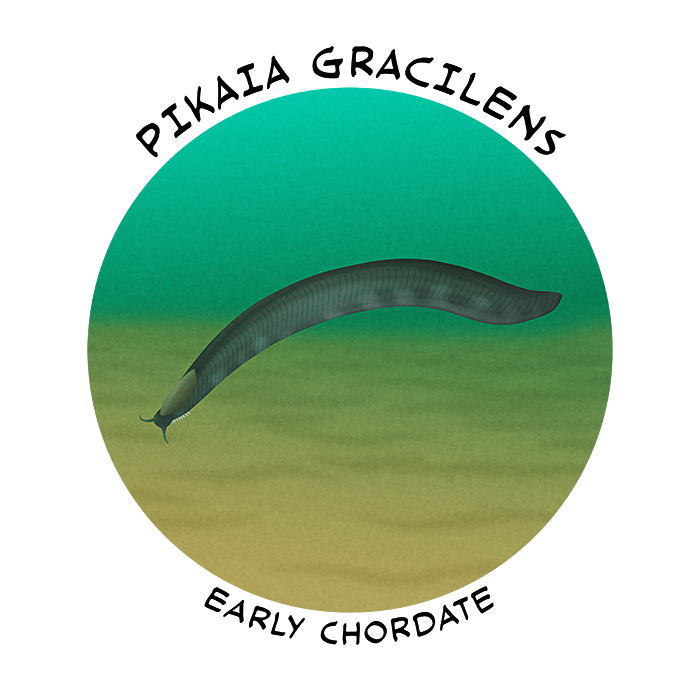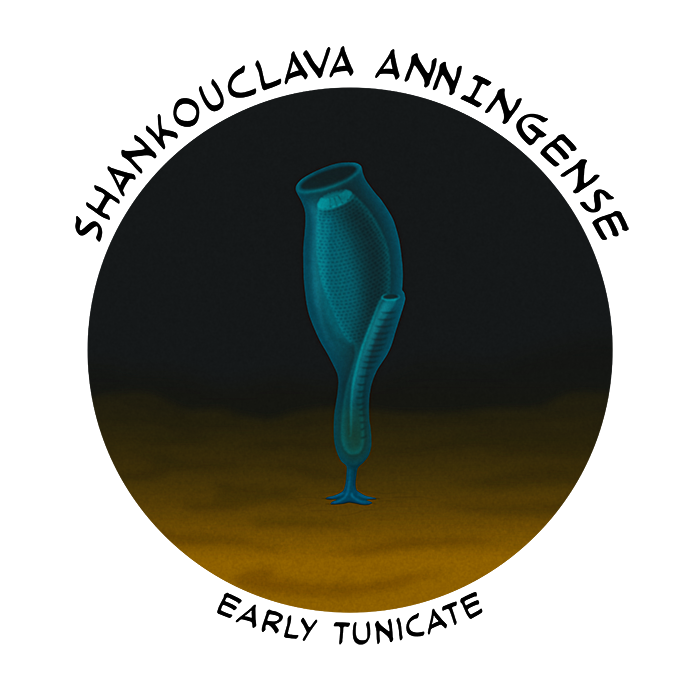Chordates are one of the most diverse animal phyla, ranging from tiny lancelets to sac-like tunicates to all fish and tetrapods. They share a common deuterostome ancestor with echinoderms and hemichordates, probably diverging from them sometime in the Ediacaran Period, and are characterized by having specific anatomical features at some point during their life cycle – a notochord, a dorsal nerve cord, pharyngeal slits, a post-anal tail, and an endostyle.
The earliest chordates were all small soft-bodied animals with no mineralized tissues, so their fossil record is poor aside from rare locations with exceptional preservation. But one of the best known examples is Pikaia gracilens from the Canadian Burgess Shale fossil deposits (~508 million years ago).

This 4cm-long (1.6″) eel-like animal had a pair of antenna-like tentacles and a shield-like structure at its front end, and some small appendages on its underside that may have been part of a gill system. Its head region wasn’t very well-defined, and it had segmented muscle blocks and long low fins running along its body.
It used to be considered to be one of the first vertebrates, but more recent studies have found it to be a more “primitive” type of chordate, possibly part of a very early stem lineage or an early type of cephalochordate.

Tunicates (or “sea squirts”) are probably the strangest group of chordates, with most of them seeming almost unrecognizable as the closest living relatives of vertebrates. But while their adult bodies generally lack characteristic chordate features like a notochord, their surprisingly tadpole-like larvae show their true evolutionary affinity.
There are a few weird Ediacaran fossils that might represent early tunicates, but one of the first definite examples is Shankouclava anningense.
Known from the Chinese Chengjiang fossil deposits (~518 million years ago), this solitary tunicate grew to about 4cm tall (1.6″) and had a short stem-like structure that attached it to the seafloor. Its anatomy closely resembled that of modern aplousobranchian tunicates, suggesting that the basic tunicate body plan appeared very early on in the group’s evolution and changed very little during the next half a billion years.
